Top Five of Bosnia and Herzegovina
Bosnia and Herzegovina was in the back of my mind for a long time before we finally decided to visit. Initially when we were planning our trip we had put it on the back burner, unsure about the state of things, and wanting to focus on other places. I’m so glad that we put it back on the table, because I would definitely put it on my list of favourite countries we have visited. The people were lovely, the food delicious, the natural beauty was more incredible than I’d ever imagined, and just overall it was a fantastic experience. Here are just a few of the highlights of our tour of Bosnia and Herzegovina!
Free Tour of Sarajevo
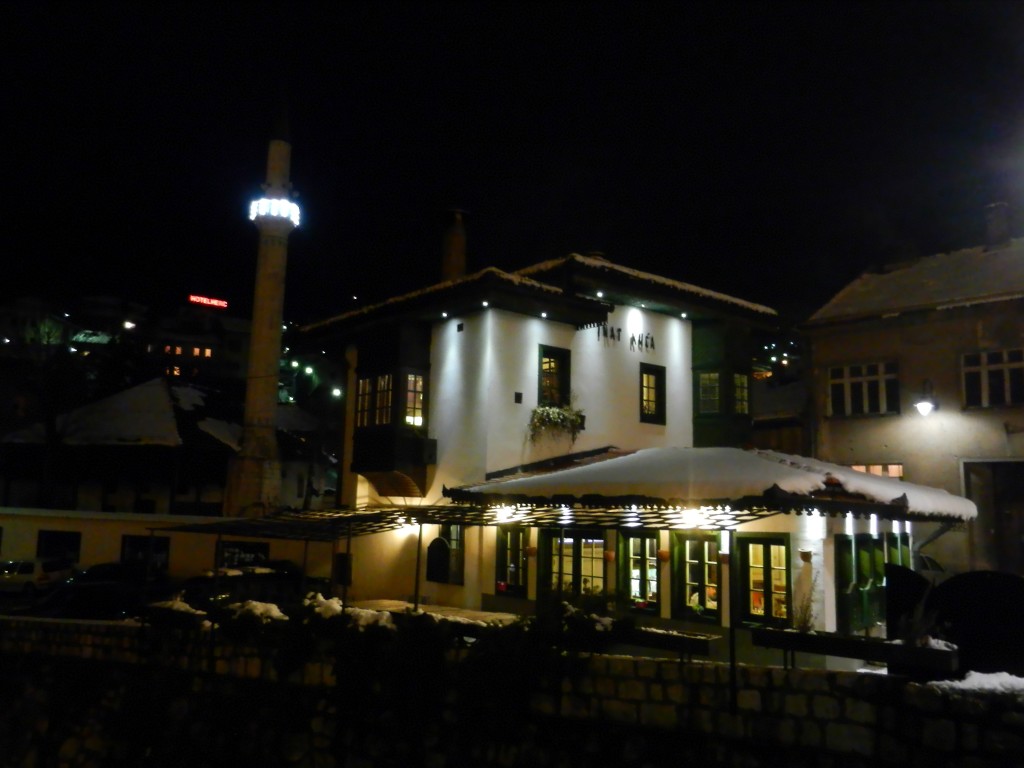
We aren’t big tour people, but Sarajevo has such an incredible history that we knew we wanted to get a more in-depth idea of what we were looking at. Lucky for us, one of the local tour companies offered a Free Tour and with a great tour guide who had been in the biz since the Yugoslavia days! Hands down I recommend that you take a tour of some sort when you visit Sarajevo. The hour and a half flew by in a blur of funny anecdotes, insightful stories, and easy-to-miss details. Even though we had wandered past the Sacred Heart Cathedral on our own on a previous visit we had completely missed the roses and their significance until our guide took us around, likewise the actual purpose of the Old Clock Tower (it keeps lunar time, significant for indicating the time of daily prayers). My favourite story was about the “Spite House”. The version on Wikipedia is more abbreviated than our guide’s, but essentially the local government wanted some land to build a mosque that already had a house on it. The owner refused to sell, despite being offered money and receiving threats, until the city agreed to move the house literally brick by brick and reassemble it on the other side of the river. In our guide’s version, he later moved it back on the original side of the river, in front of the mosque that the city had built. Who knows if it’s completely true, but today it’s a restaurant proudly named Inat Kuća, “Spite House”.
Baščaršija, Sarajevo
I’m sure it’s no surprise to anyone at this point that I love marketplaces. People meeting, greeting, hustling, bustling, they’re always full of life and energy. Baščaršija, the old bazaar of Sarajevo, is no exception. The cultural and historical centre of Sarajevo, it was built when the city was first founded by Isa-Beg Isaković in the 15th century. Features in the area include a number of Gazi Husrev-beg‘s contributions to Sarajevo, including Gazi Husrev-beg Mosque and Gazi Husrev-Beg Hamam, as well as Morića Han and the Sebilj. Once you’ve exhausted yourself with a thorough tour through some of historical sights of Sarajevo, take a seat at one of the local grills to sample the local flavours! Favourites of ours included cevapi (a host of ours dreamily said the best he ever had were in Sarajevo) and burek cooked in the traditional way over hot coals, yum!
The Train between Sarajevo and Mostar
Climbing aboard the early morning train from Sarajevo to Mostar we expected nothing more than your average eastern European train ride, a.k.a. a dated, slightly dirty train rumbling more slowly than the time schedule demanded (but, hopefully, not more than the rattling train could handle). Nathanael and I have a long-standing joke about how a lot of the trains must just chuck a cinder-block out the back for braking. All (most) kidding aside, while the train was rocking some pretty great red velvet seats, what made the journey was the jaw-dropping scenery that we hadn’t been expecting. I’m pretty sure we killed our camera before we even made it to Mostar. Every bend we turned got more and more beautiful, mountains got higher, the river got brighter and wider, the sun came out to light it all up, it was perfect! As Nat mentioned, most tourists come up to Mostar from the Dubrovnik and totally miss out. If you find yourself in Bosnia, schedule in the time and take the train. You’ll be in for some of the most beautiful, natural panoramas in Europe.
Mostar Old Town
It was love at first sight when we took our first steps into Mostar‘s Old Town. The pale stonework shimmers in the afternoon light and welcomes you to a city whose aura has long captivated travellers from near and far. The pièce de résistance is, of course, the beautiful, arch of Stari Most, the Old Bridge. Faithfully and laboriously repaired using original techniques after its destruction during the Bosnian War, the bridge seems to glow under the golden sun and the constant flashing of cameras. But as we’ve mentioned in our last article, there’s a lot more to Mostar than simply the bridge. The old Ottoman quarter has been beautifully restored, with Kujundžiluk (“gold alley”) waiting to offer you incredible photo-ops of the bridge and great deals on every kind of souvenir you never realized how badly you needed. Wandering further, you can find less-famous but still lovely, picturesque bridges connecting cobblestone streets, beautiful Ottoman residences, mosques, and much more. Don’t forget to check out the local cafes and restaurants overlooking the bridge! Touristy though they are, a favourite moment of mine was sipping some Turkish coffee and nibbling a piece of Turkish delight in a cafe overlooking Stari Most.
Blagaj Tekke
Blagaj Tekke, the Dervish monastery just outside of Blagaj town, is must-see if you find yourself in Mostar. A short ride on the public bus will have you in the town in no time, and from there a short walk will soon find you staring up at a dizzying cliff face. Tucked beneath this vertigo-inducing cliff, you’ll find a quiet monastery resting peacefully next to a 15-metre wide cave and swirling water. This is Vrelo Bune, a strong, karstic spring from which the Buna river begins, and whose beauty it’s said inspired the Ottoman sultan to build a tekija. It was built in the early 16th century to serve as both a living quarters and a holy place of worship. While it’s still in use by the dervishes as a place to gather and perform rituals, today it is open to tourists year-round who would like to take a glimpse at the mystical heart of the Mostar basin. As it is a holy place, the usual rules of respect and conduct apply (covered shoulders and legs, covered heads for women, no shoes inside, etc.) and shawls and scarves are provided for all guests to the monastery. After taking in the lovingly crafted interior, don’t forget to cross the bridge and take the small trail around to the other side of the cave. You can get some great pictures of the monastery overlooking the water, and listening to the burbling, turquoise stream makes it even easier to understand why this is such a special place.
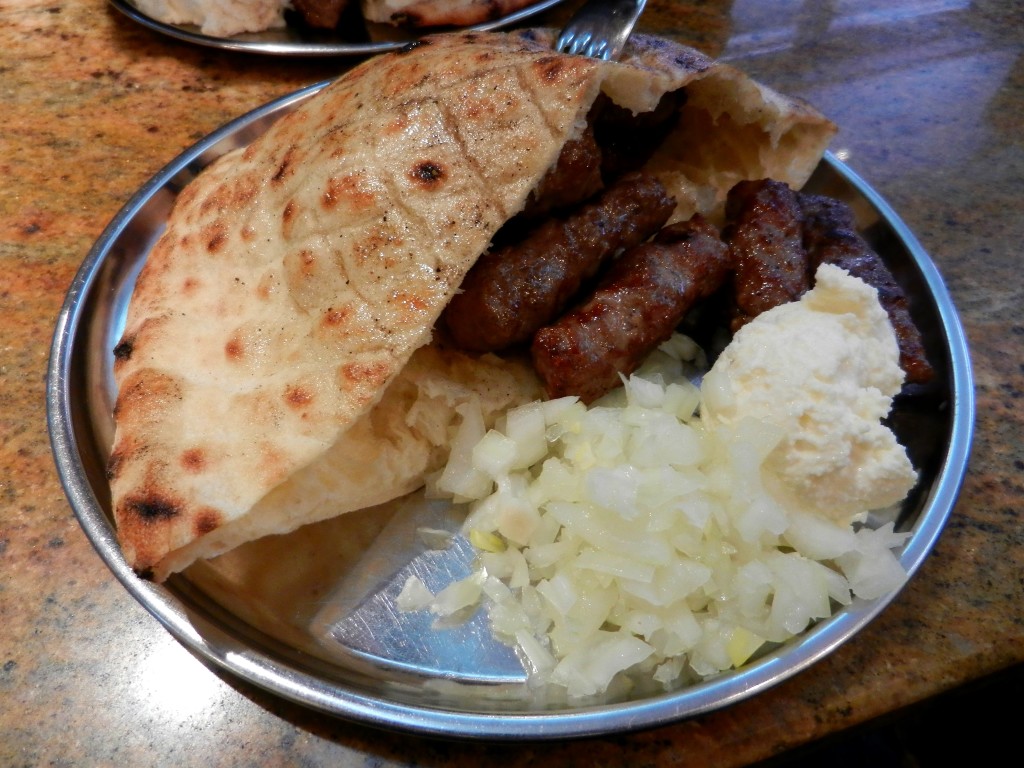
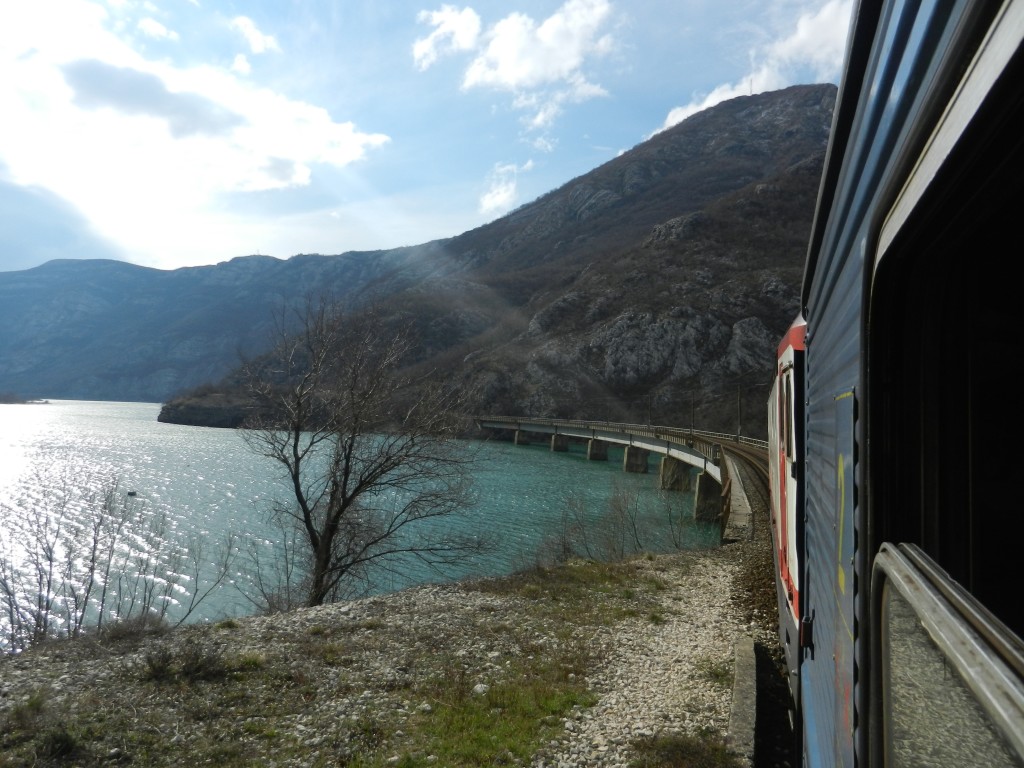
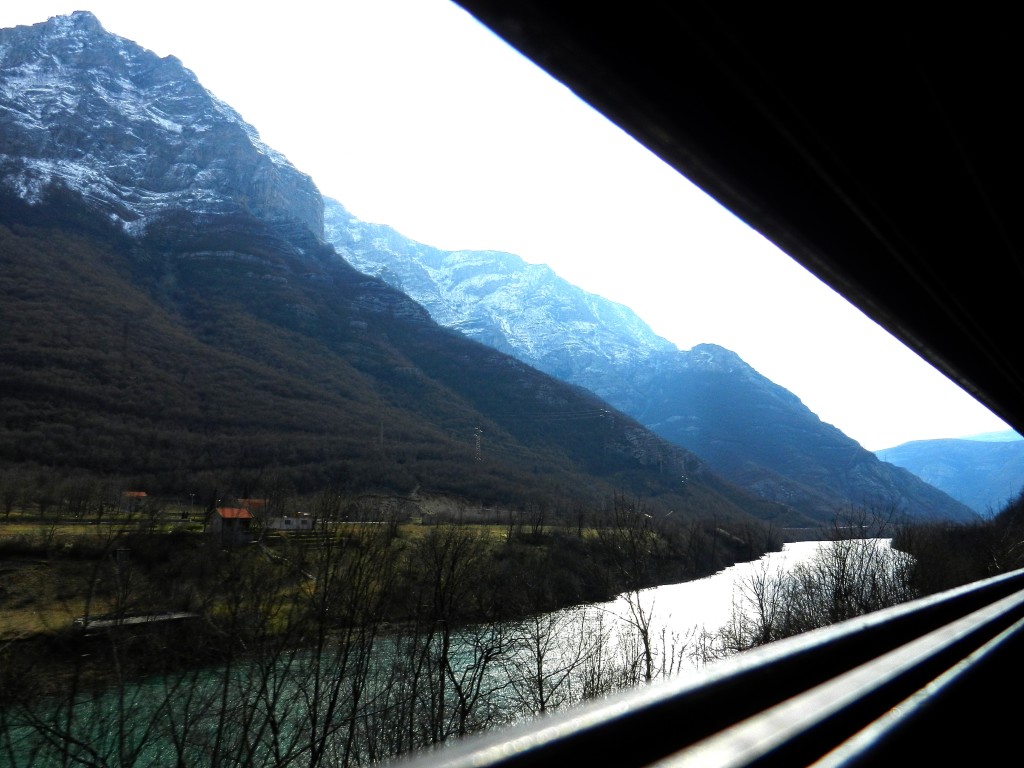
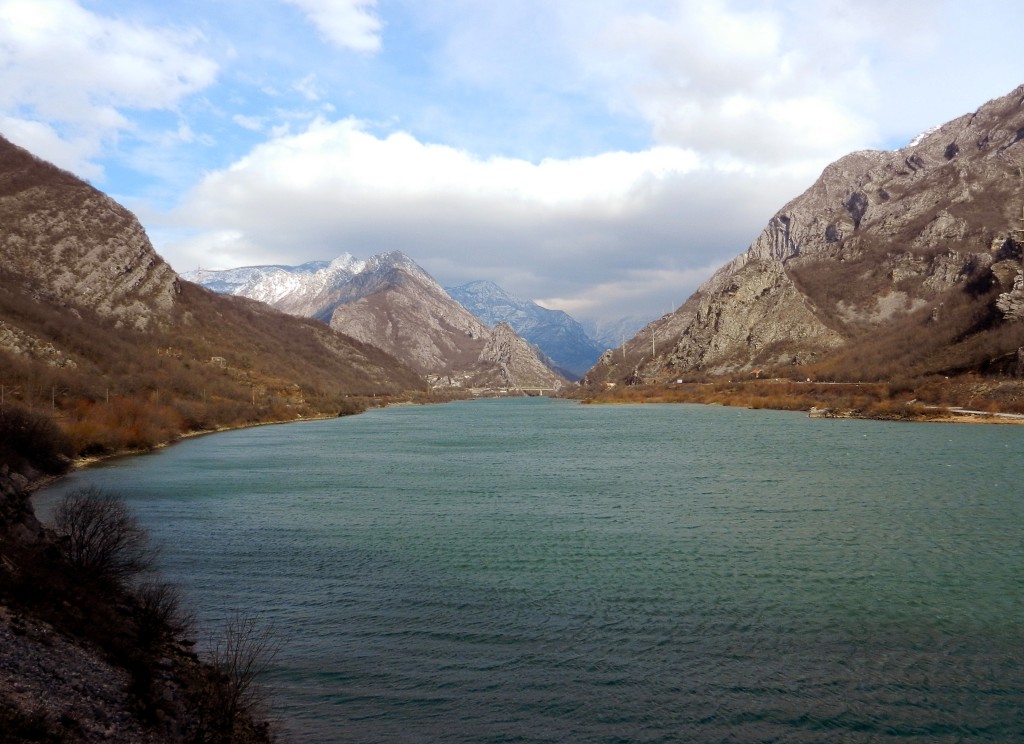
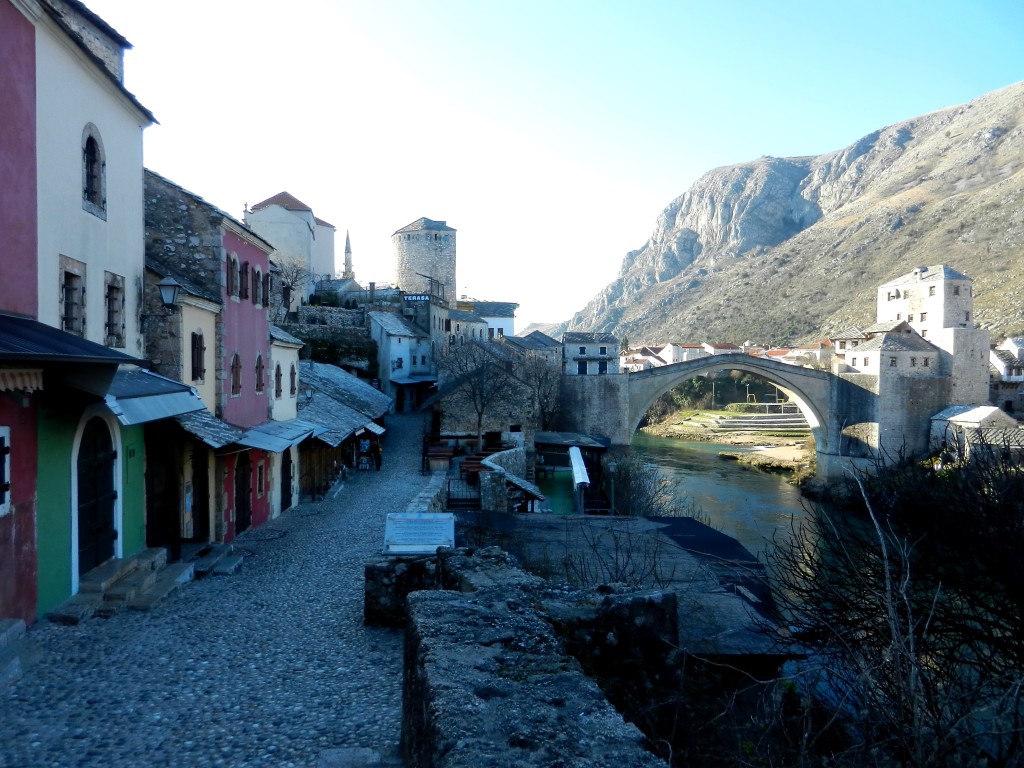
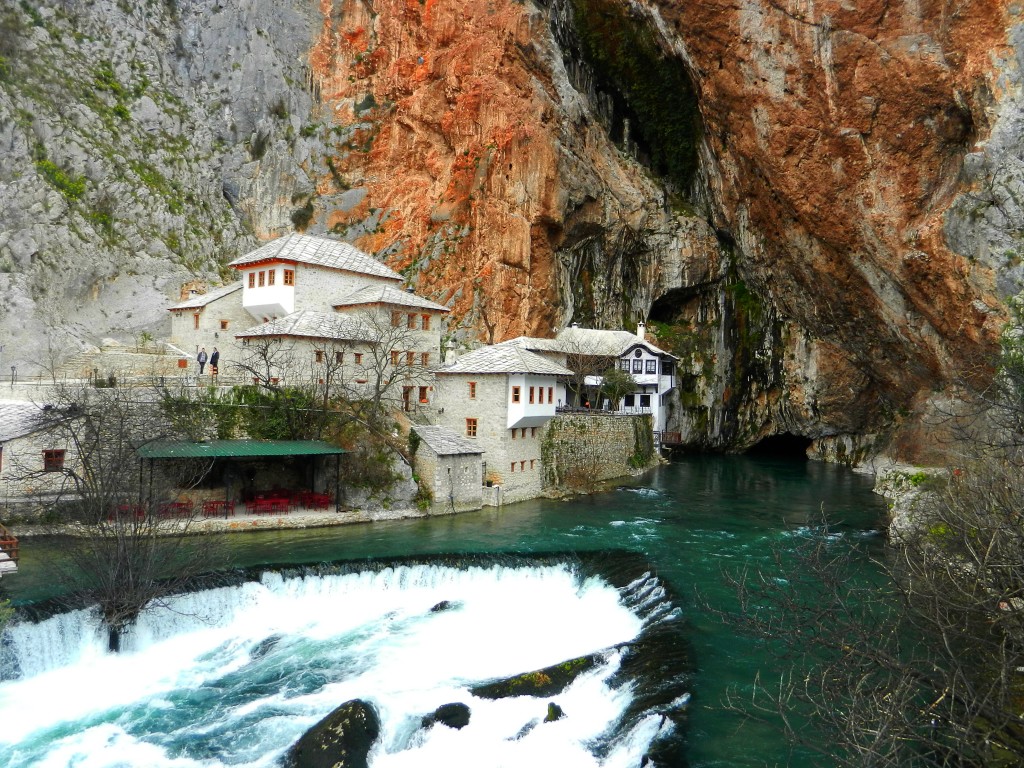
It is fascinating that your photos are with snow and without. How long were you there???
Thanks, Mom! Only a week in Sarajevo, isn’t that crazy?? There was a two-day blizzard partway through the week that covered everything in a couple feet of snow, we couldn’t believe it!